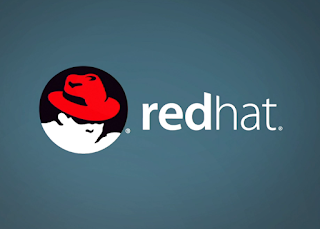The Optical Internetworking Forum has approved Multi-Link Gearbox (MLG) 3.0, an agreement that supports 100G links and allows independent 10GBASE-R signals to transit physical 20G and 40G lanes for higher bandwidth capability.
 The MLG 3.0 specifies a logic layer between the Ethernet MAC and PHY layer hardware that allows the data from multiple MACs to be aggregated onto higher speed data links. This allows independent 10GBASE-R and 40GBASE-R signals to transit 4x25G and 8x25G gearboxes. The agreement defines three MLG configurations: A 4x25G lane configuration is comprised of 20 MLG lanes. An 8x25G lane configuration is comprised of 40 MLG lanes. A 2x20G/1x40G lane configuration is comprised of 4 MLG lanes (similar to 40GBASE-R) to carry up to four 10GBASE-R signals.
The MLG 3.0 specifies a logic layer between the Ethernet MAC and PHY layer hardware that allows the data from multiple MACs to be aggregated onto higher speed data links. This allows independent 10GBASE-R and 40GBASE-R signals to transit 4x25G and 8x25G gearboxes. The agreement defines three MLG configurations: A 4x25G lane configuration is comprised of 20 MLG lanes. An 8x25G lane configuration is comprised of 40 MLG lanes. A 2x20G/1x40G lane configuration is comprised of 4 MLG lanes (similar to 40GBASE-R) to carry up to four 10GBASE-R signals.
In addition, the OIF has commenced work on a new analog coherent optics project that supports higher baud rate and higher wavelength/ carrier-count applications at higher density than the existing CFP2-ACO. The new project, dubbed CFP8-ACO, utilizes the existing CFP8 definition from the CFP-MSA group and provides up to 4 wavelengths/carriers per module. In addition to a 20w power profile, the new specification includes a 9.5mm module height, allowing for a double-stack line card or belly-to-belly. A 40mm module width will enable a 2 x 8 configuration for a 16 module line card. This allows for an increased number of modules as well as an increased number of wavelength/carriers.
“The OIF is looking ahead to what is needed in 2018 and we need to get started now to support the market needs for more wavelength/carriers in coherent optics modules,” said Karl Gass of Qorvo and the OIF Physical and Link Layer Working Group optical vice chair. “Our goal with the CFP8-ACO module is a 4x increase in faceplate density and we expect to complete this next year.”
http://www.oiforum.com/
 The MLG 3.0 specifies a logic layer between the Ethernet MAC and PHY layer hardware that allows the data from multiple MACs to be aggregated onto higher speed data links. This allows independent 10GBASE-R and 40GBASE-R signals to transit 4x25G and 8x25G gearboxes. The agreement defines three MLG configurations: A 4x25G lane configuration is comprised of 20 MLG lanes. An 8x25G lane configuration is comprised of 40 MLG lanes. A 2x20G/1x40G lane configuration is comprised of 4 MLG lanes (similar to 40GBASE-R) to carry up to four 10GBASE-R signals.
The MLG 3.0 specifies a logic layer between the Ethernet MAC and PHY layer hardware that allows the data from multiple MACs to be aggregated onto higher speed data links. This allows independent 10GBASE-R and 40GBASE-R signals to transit 4x25G and 8x25G gearboxes. The agreement defines three MLG configurations: A 4x25G lane configuration is comprised of 20 MLG lanes. An 8x25G lane configuration is comprised of 40 MLG lanes. A 2x20G/1x40G lane configuration is comprised of 4 MLG lanes (similar to 40GBASE-R) to carry up to four 10GBASE-R signals.In addition, the OIF has commenced work on a new analog coherent optics project that supports higher baud rate and higher wavelength/ carrier-count applications at higher density than the existing CFP2-ACO. The new project, dubbed CFP8-ACO, utilizes the existing CFP8 definition from the CFP-MSA group and provides up to 4 wavelengths/carriers per module. In addition to a 20w power profile, the new specification includes a 9.5mm module height, allowing for a double-stack line card or belly-to-belly. A 40mm module width will enable a 2 x 8 configuration for a 16 module line card. This allows for an increased number of modules as well as an increased number of wavelength/carriers.
“The OIF is looking ahead to what is needed in 2018 and we need to get started now to support the market needs for more wavelength/carriers in coherent optics modules,” said Karl Gass of Qorvo and the OIF Physical and Link Layer Working Group optical vice chair. “Our goal with the CFP8-ACO module is a 4x increase in faceplate density and we expect to complete this next year.”
http://www.oiforum.com/














